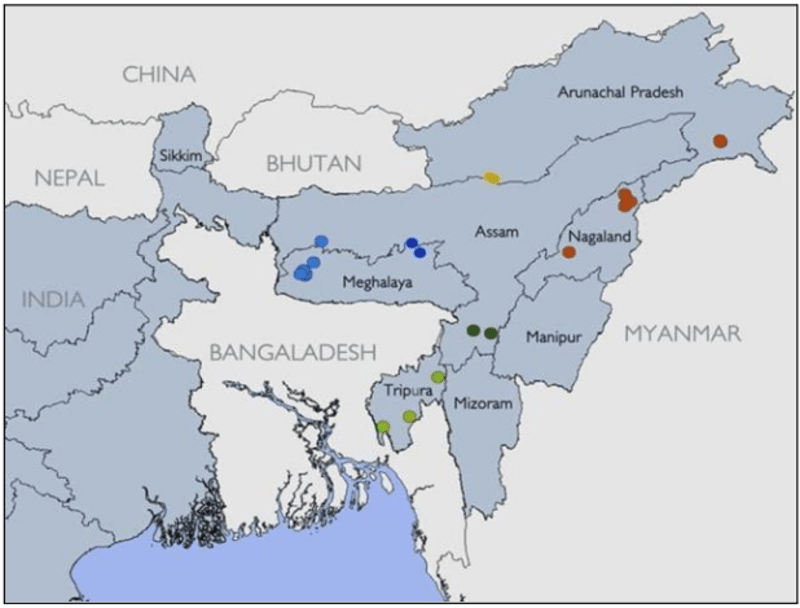What India’s Army Chief needs to do in the face of two-front threats?
Relevance: GS II and III (International Relations and Internal Security)
- Mains: Neighboring countries and Security Issues;
Why in the News?
Recently, an Army Chief's annual media interaction presented a mature assessment of security issues facing India, making room for pragmatic solutions.
Background:
- Every year, on January 11, the Army Chief holds a media interaction and responds to media queries related to India’s military strategic security issues, ranging from how borders were being handled against specific threats to internal security issues.
- The various aspects of Modernization, Upgradation and Procurement are, of course, inevitable.
- The Army Chief reflected upon a period which has been afflicted by conflict resurgence and instability in some areas while exuding full confidence about the state of the Army and its ability to deliver the nation’s security needs.
What are the Security challenges?
- Issue in Manipur: Although in Manipur, the level of violence had decreased yet, the fact that of the 5,000-odd small arms stolen from state police armories’, only about 30% of the weapons have been recovered, confirms the challenge before the Assam Rifles and the Army’s III Corps.
- Lack of Security and Resources: Only 20 Assam Rifles (AR) units are available for border sealing; others remain on the Counter-insurgency (CI) grid and work in conjunction with other forces. Assam Rifles units, by virtue of their near permanent deployment in the Northeast, are the best geared to handle the situation.
- This is one entity which can do with expansion, considering the scope for proliferation of security issues in the Northeast.
- Lack of Neutrality: The lack of neutrality and bias towards one community or the other are an inevitable part of CI operations, where efforts to counter an effective force such as AR will invariably be made. The Army has to resist this since the management of AR has always remained a contentious subject.

- Issue in Indo-Myanmar border: The Free Movement Regime (FMR) with Myanmar permits movement of border populations up to 16 km on either side of the border without visas; only permits are required.
- This, too, facilitates infiltration by undesirable and anti-national elements, along with smuggling of narcotics and contraband.
- Bangladesh factor: Although the present government in Bangladesh ensures no interference from that quarter, something more permanent needs to be worked out to neutralize the potential of external support.
|
China Factor: There is the entire gamut of issues of the northern borders with China along the LAC. India’s operational preparedness in these areas continues to be of a very high level. The deployment is both robust and balanced.
|
Way Forward:
Need for Modernization, Upgradation and Procurement:
- Integrating with Social Narratives: The Manipur turbulence is likely to persist as ethnic battle lines are drawn up and remain even more complex. It has remained restricted to some states in the Northeast, but unless tackled robustly, has the potential to spread to various areas, bringing chaos across the vulnerable Northeast. This will need to be integrated with political and social narratives to take it to a successful end.
- Dynamically Deploying: The trust deficit is so deep that no dilution in deployment can be afforded at this juncture. While no danger of an impending war exists, tactical level differences can always manifest as misunderstandings. While China has attempted to coerce India, it has not succeeded. India needs to keep its options open, without going overboard in any direction.
- Optimizing through challenges: The Army needs to keep the Army in a high state of readiness, reorder force structuring for the optimum response to two-front threats and avert any tactical and sub-tactical triggers which can upset the apple cart.
- The forces must also be prepared for the inevitable technology transformations and even for what may appear mundane — threats from climate change.
- When the threats are realistically assessed there will be more pragmatic solutions.
Mains PYQs
Q. Border management is a complex task due to difficult terrain and hostile relations with some countries. Elucidate the challenges and strategies for effective border management. (2016)
Q. The North-Eastern region of India has been infested with insurgency for a very long time. Analyze the major reasons for the survival of armed insurgency in this region. (2017)
Q. Cross-border movement of insurgents is only one of the several security challenges facing the policing of the border in North-East India. Examine the various challenges currently emanating across the India-Myanmar border. Also, discuss the steps to counter the challenges. (2019)


